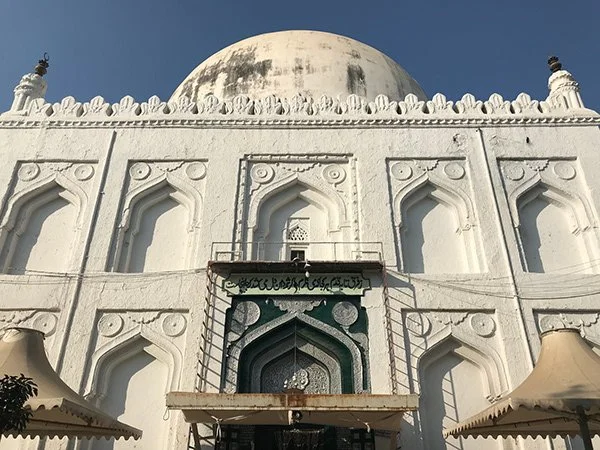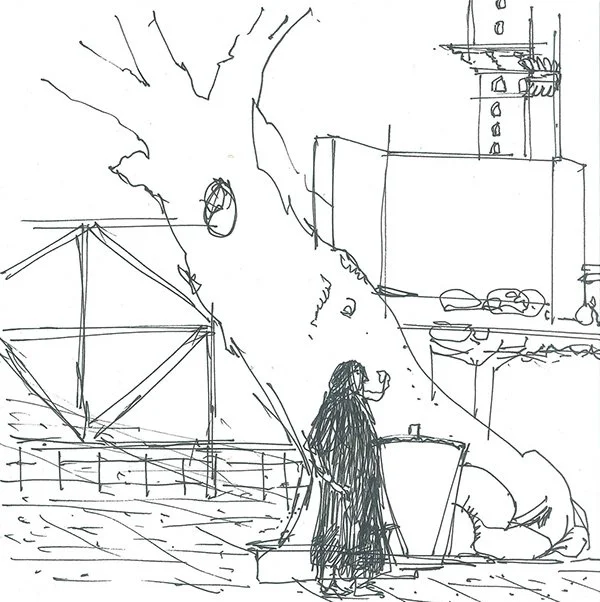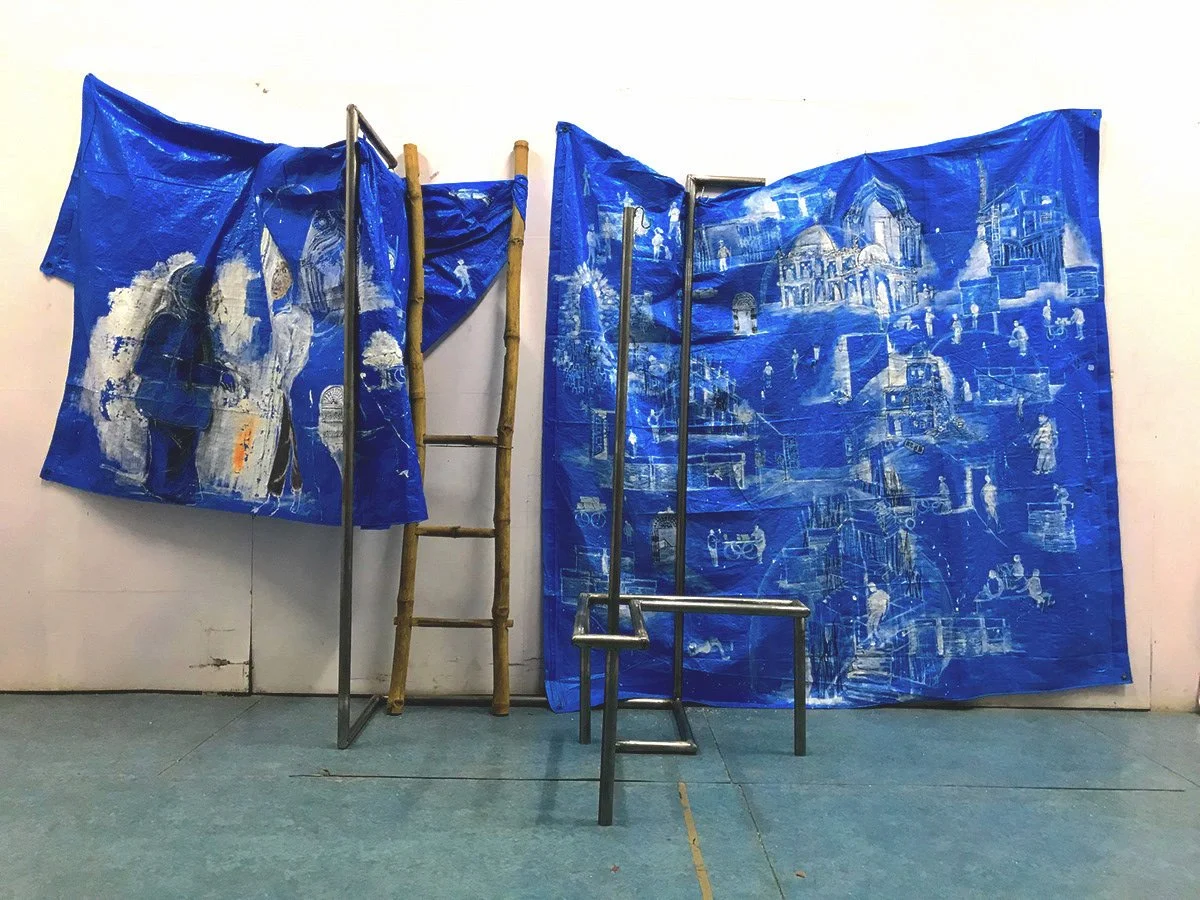This project was realised in Gulbarga (officially known as Kalaburagi) which lies in the north of Karnataka, about 200 kms from Hyderabad. The architecture and structures present there are testimony to the various rulers and styles the place has undergone. The visual style grew from strength to strength as different architectural references and rituals merged and people of different castes and religions started co-existing. Physical structures dated from the 13th-14th century have stood the test of time and are still being used by the people.
The Dargah in itself feels like a self sustaining ecosystem as the markets have found a way inside and the people staying there have duties to follow. Observing the ways in which people have beliefs associated with structures and objects, I made notes and sketches of the visual cues and their ways of interaction. Interviewing people, I got to know their beliefs on giving boundaries to a spiritual place like the Dargah. As soon as the people step out of the Dargah, there is a disarray in the streets and that sense of connect with the space is lost.
The site of closed shutters and halted construction sites is a commonly recurring visual in the streets of Gulbarga. Seeing these in the public, the idea of a 'construct' came to my mind and I felt the need to highlight the temporary and changing nature of spaces.
Phase I
Thesis project funded as a collaboration between Srishti Institute of Art, Design & Technology, Aga Khan Foundation, UNESCO chair for heritage and Team YUVAA. A site specific interactive installation realised and displayed in Gulbarga, India inspired by the dynamic ecosystem of the Khwaja Bande Nawaz Dargah, a religious monument active since the 14th century focussed on how rituals add the element of continuity to a space and how demarcated boundaries change people’s behaviour in interior and exterior spaces.
In and Out of the Dargah
Installation and Spatial Design • 2018
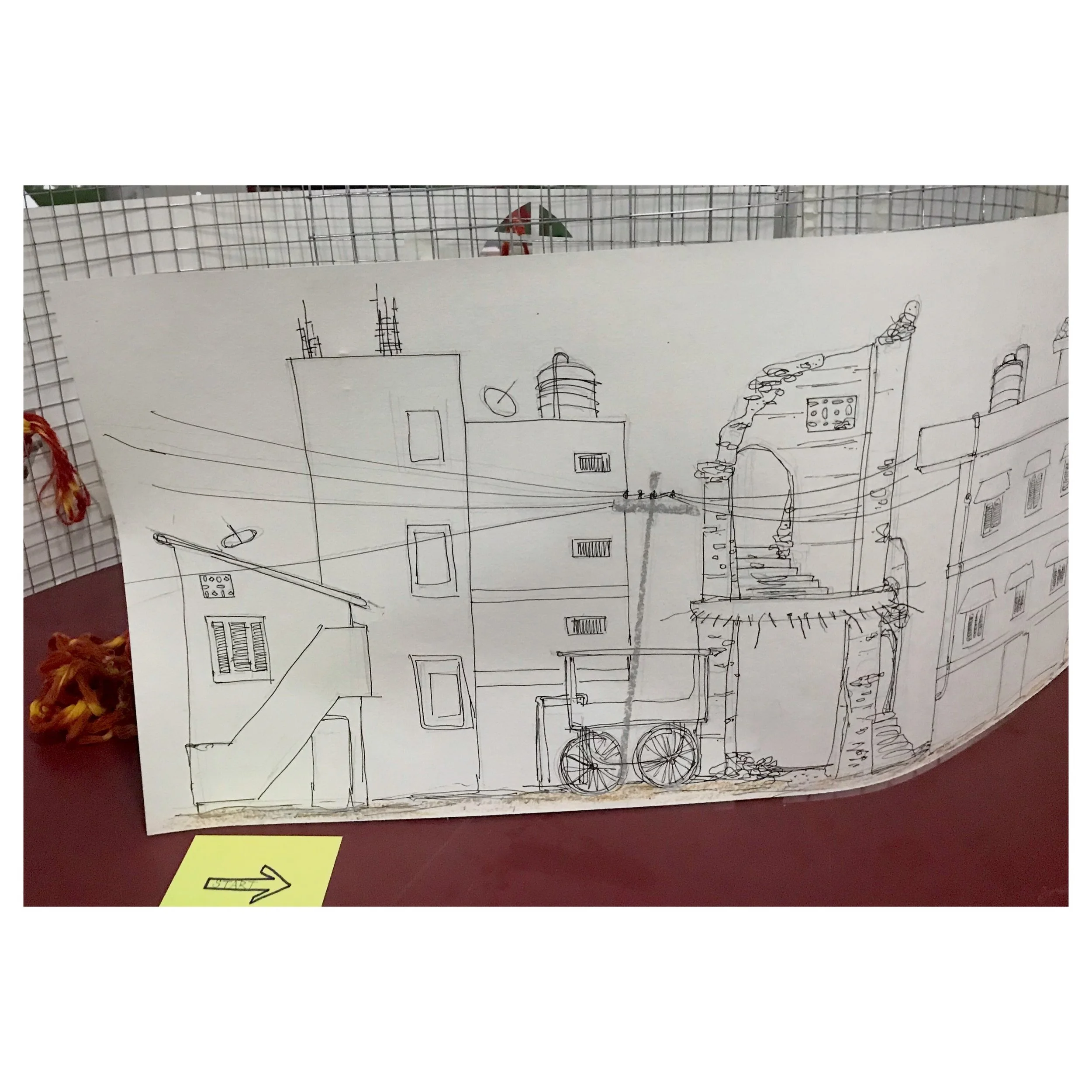
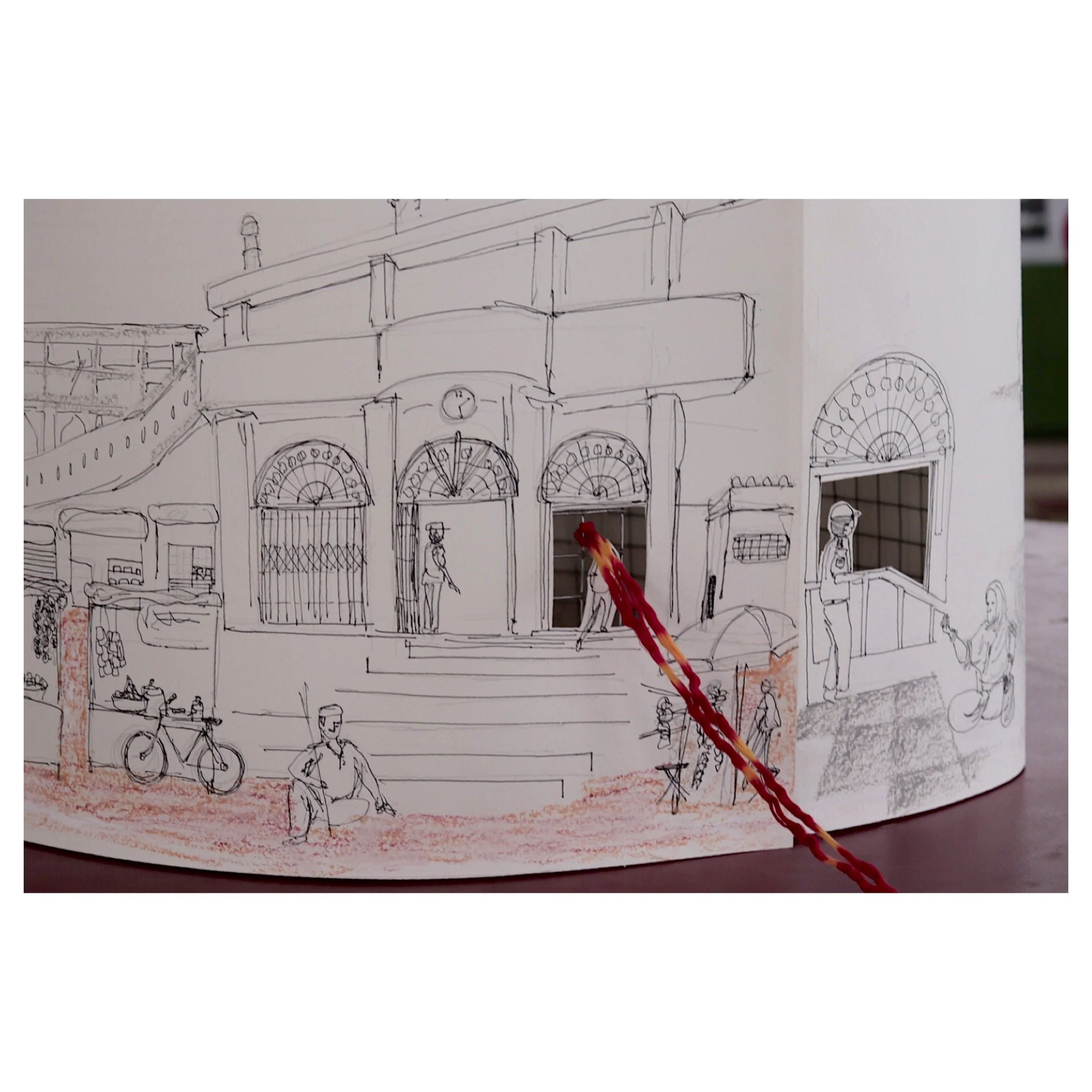


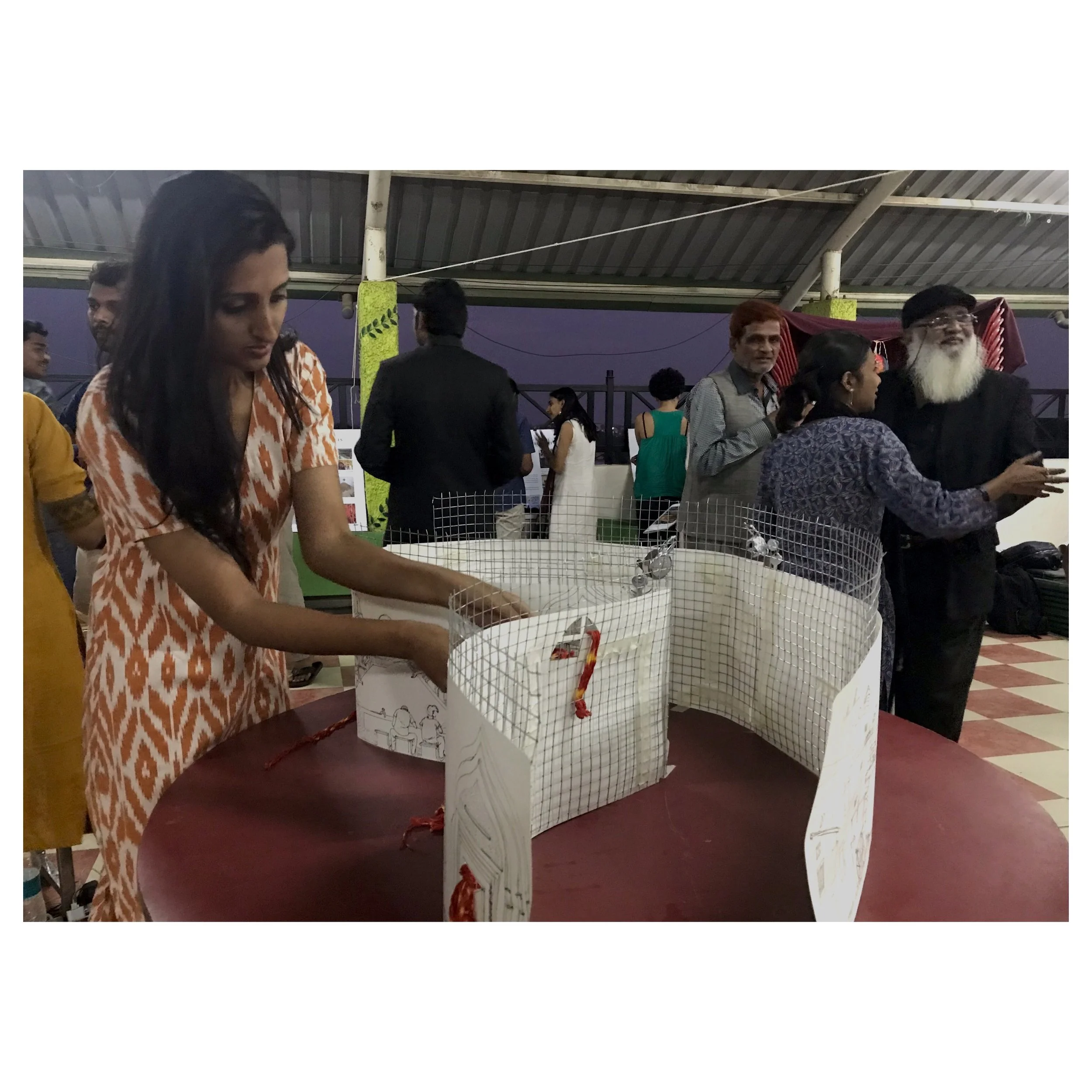
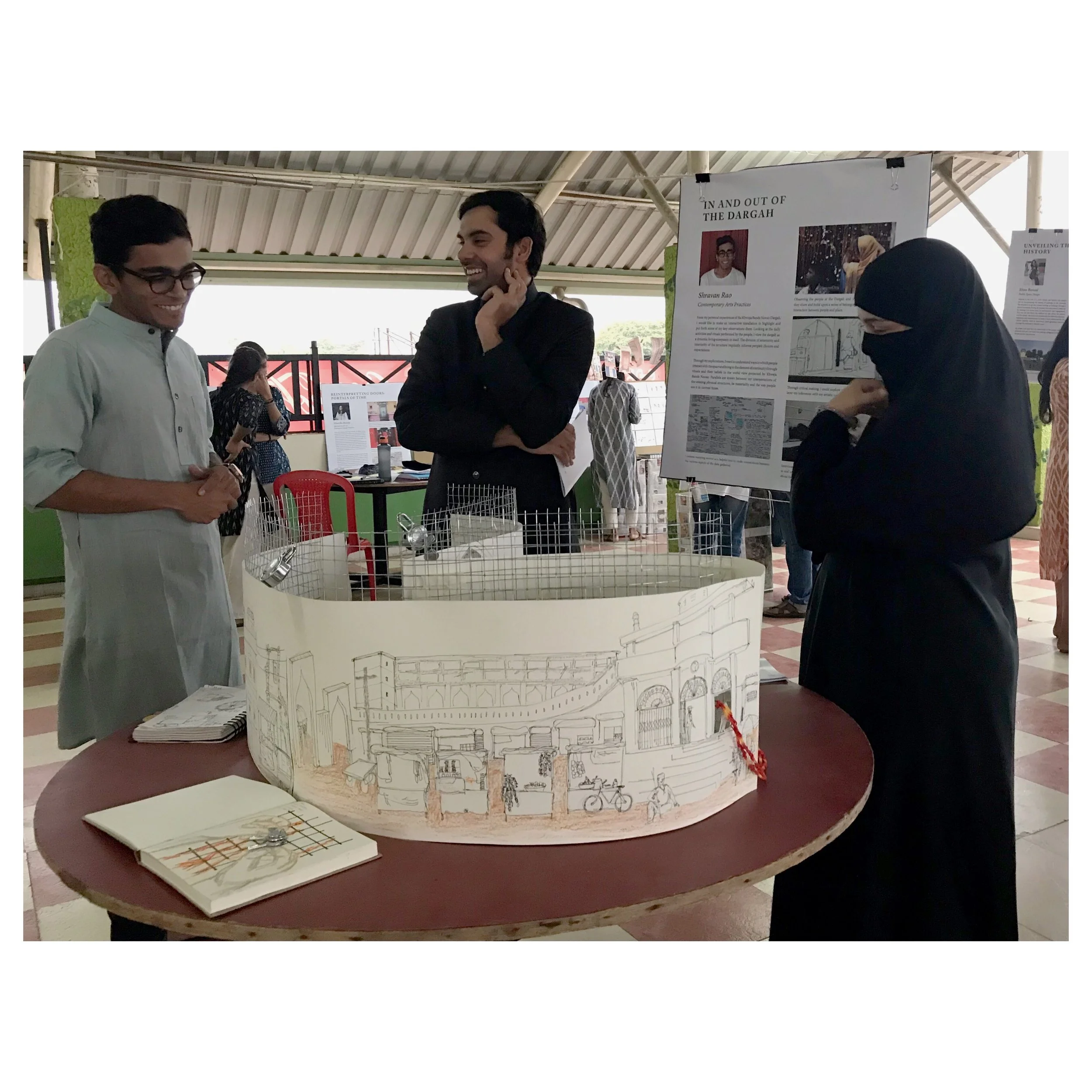
Phase II
Here, tarpaulin serves as a tool for initiating change, rather than just a material used in construction to evoke a sense of a shared space through an intervention that evolves after its installation. Options for outdoor seating and stalls for street vendors are offered to choose from as and when required pertaining to the site. By initiating civic dialogue via informal placemaking, the public can express their needs and beliefs about built environments. Public spaces could be reclaimed and made functional by social engagement.



Details

